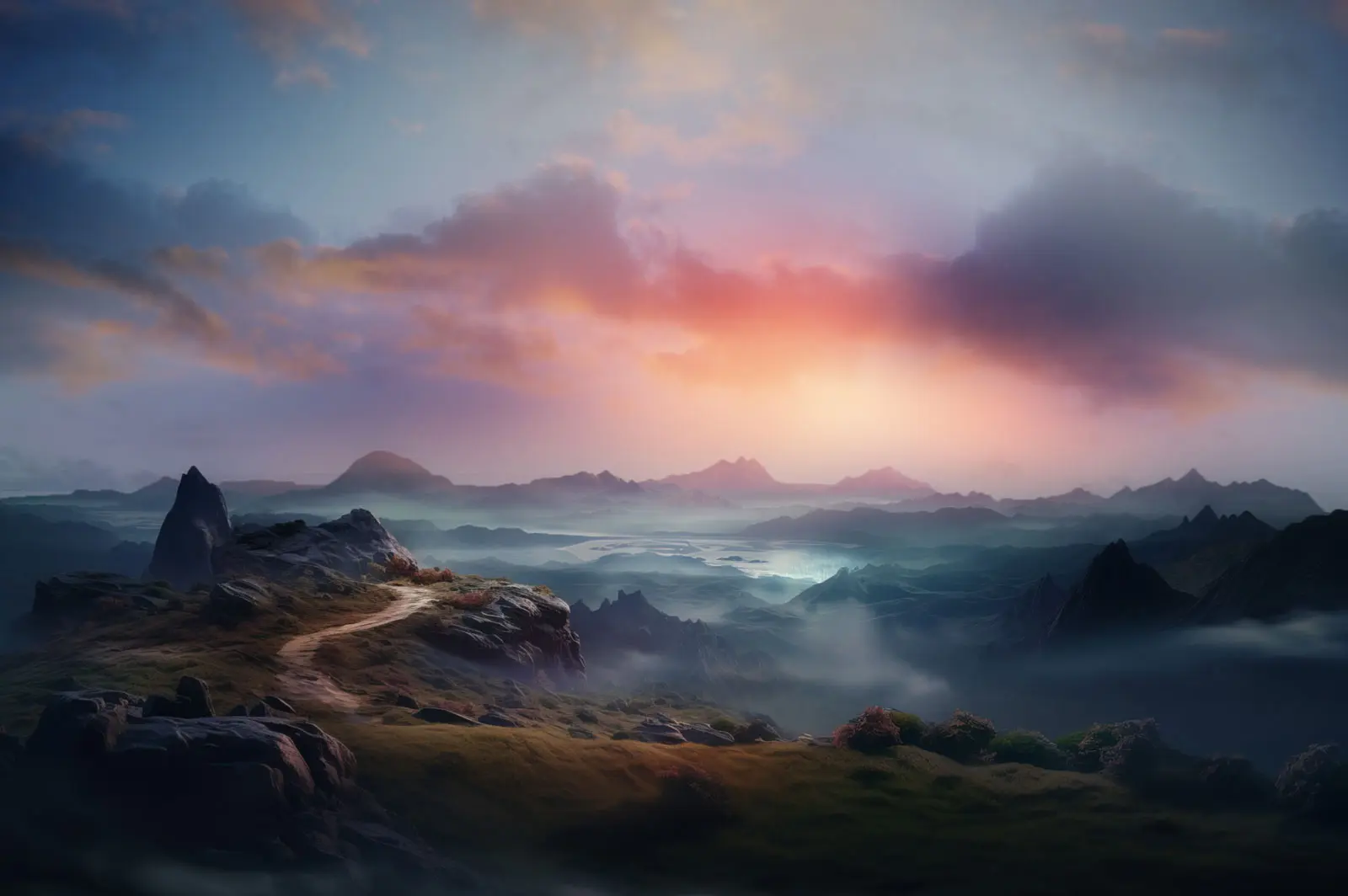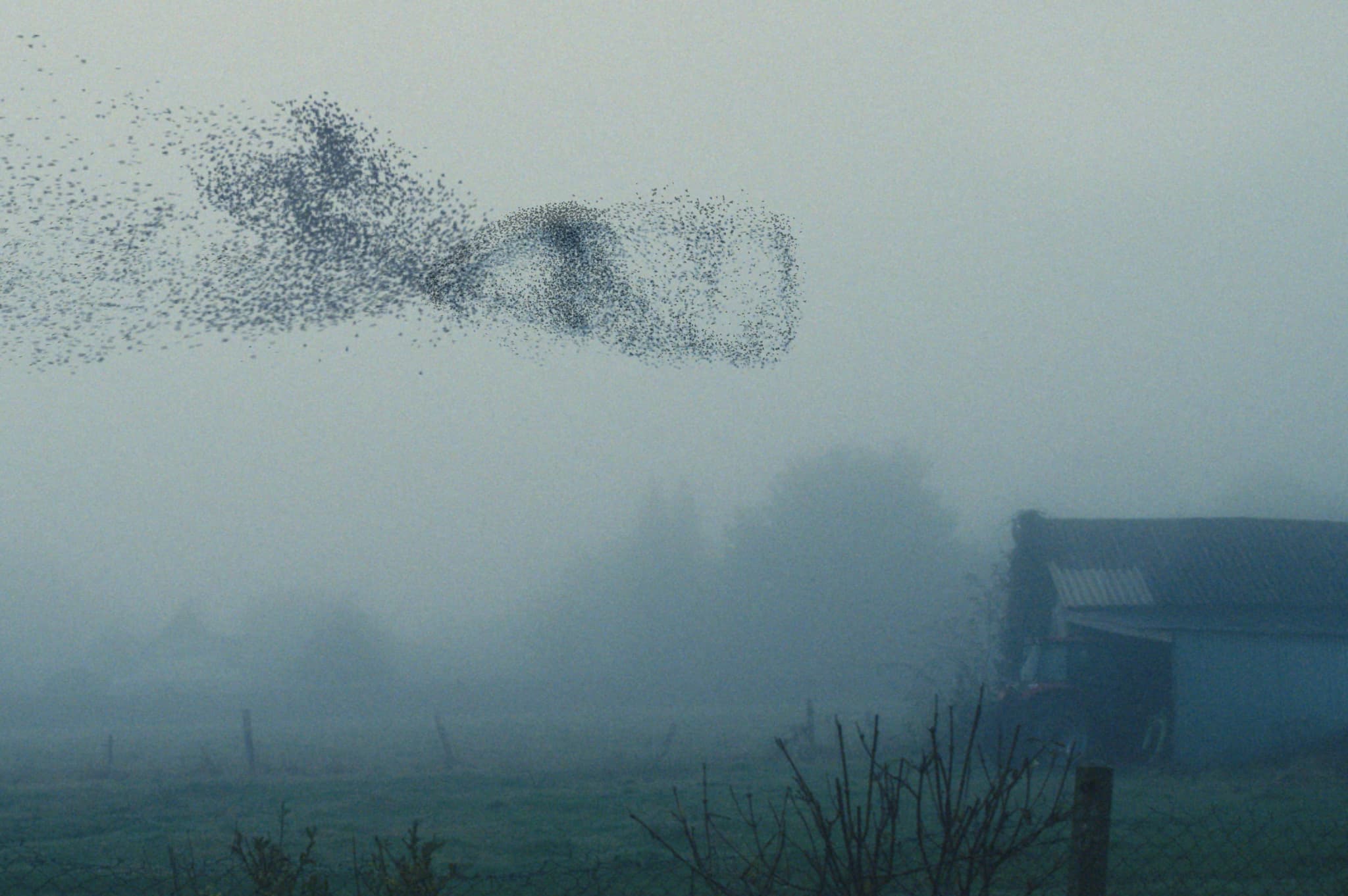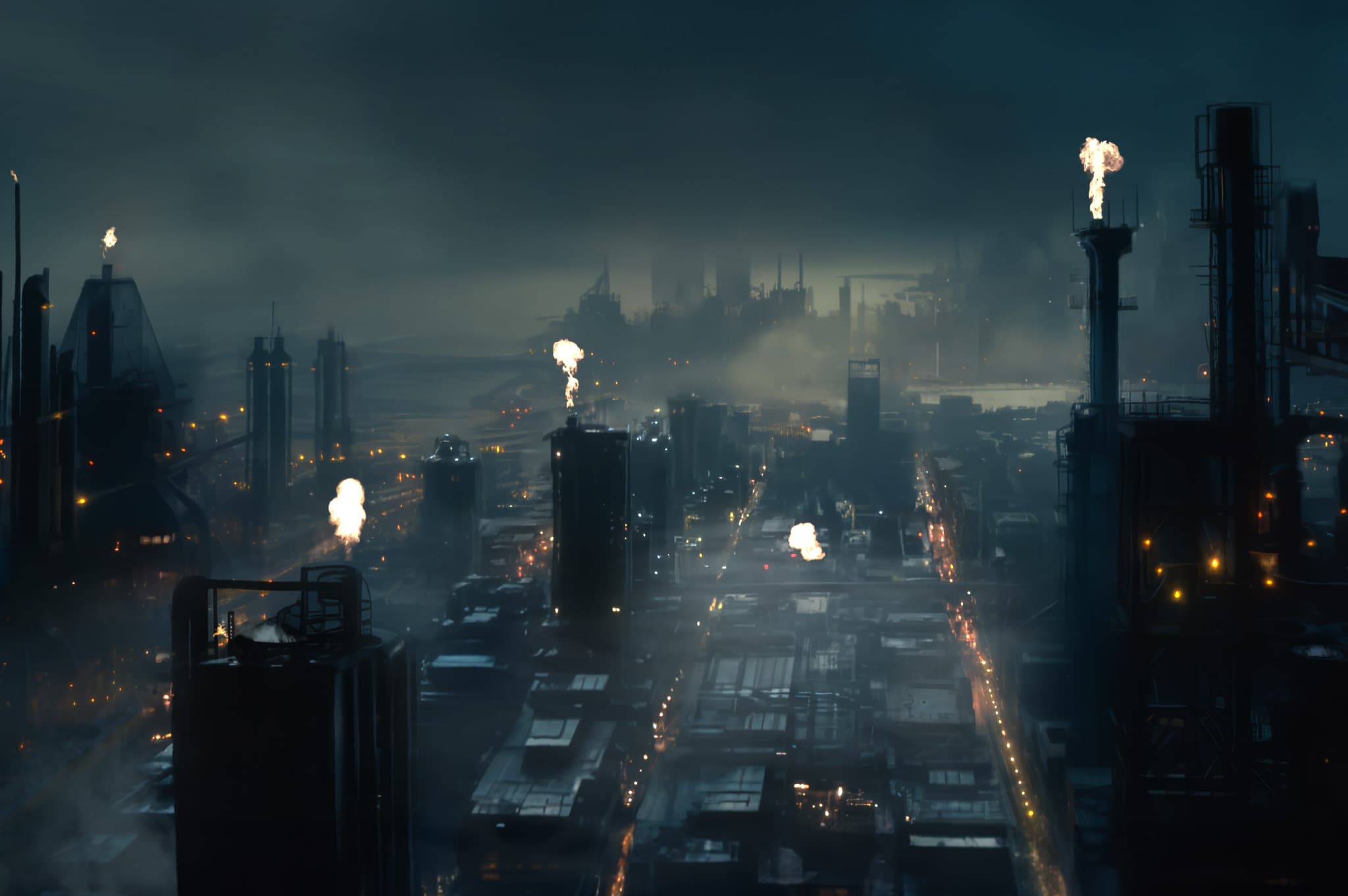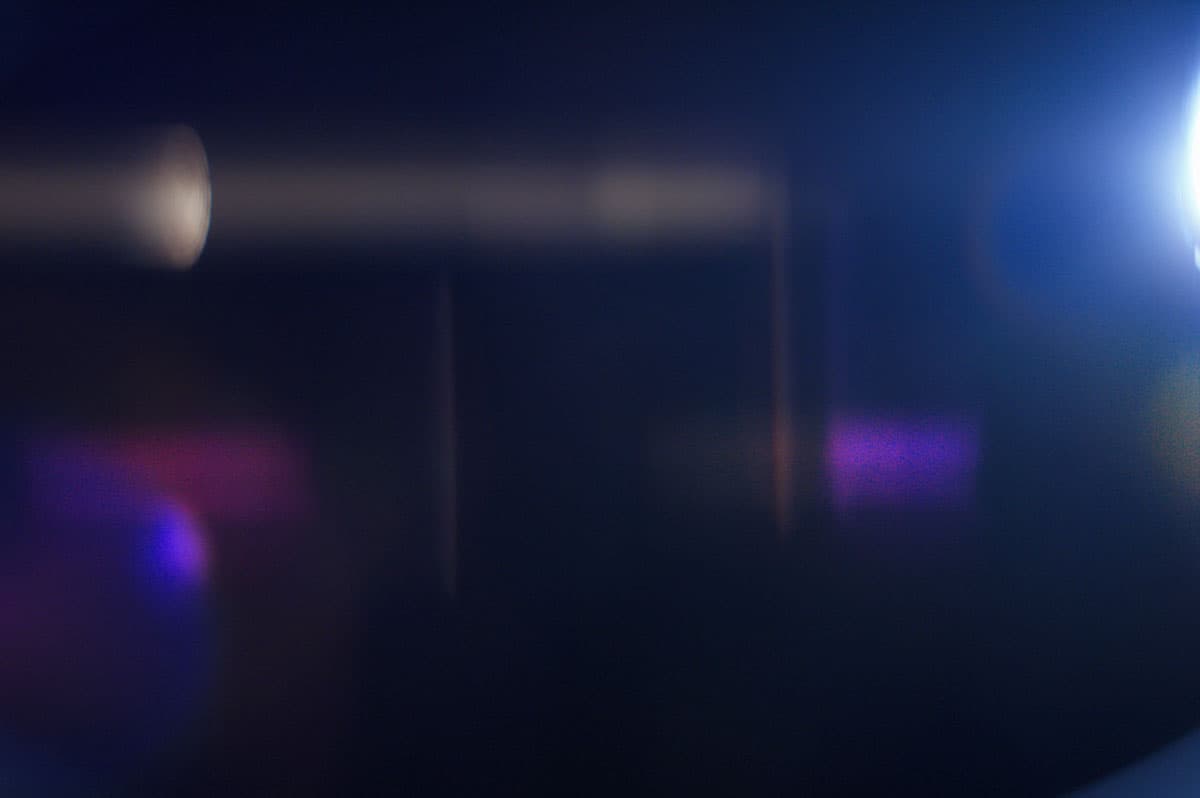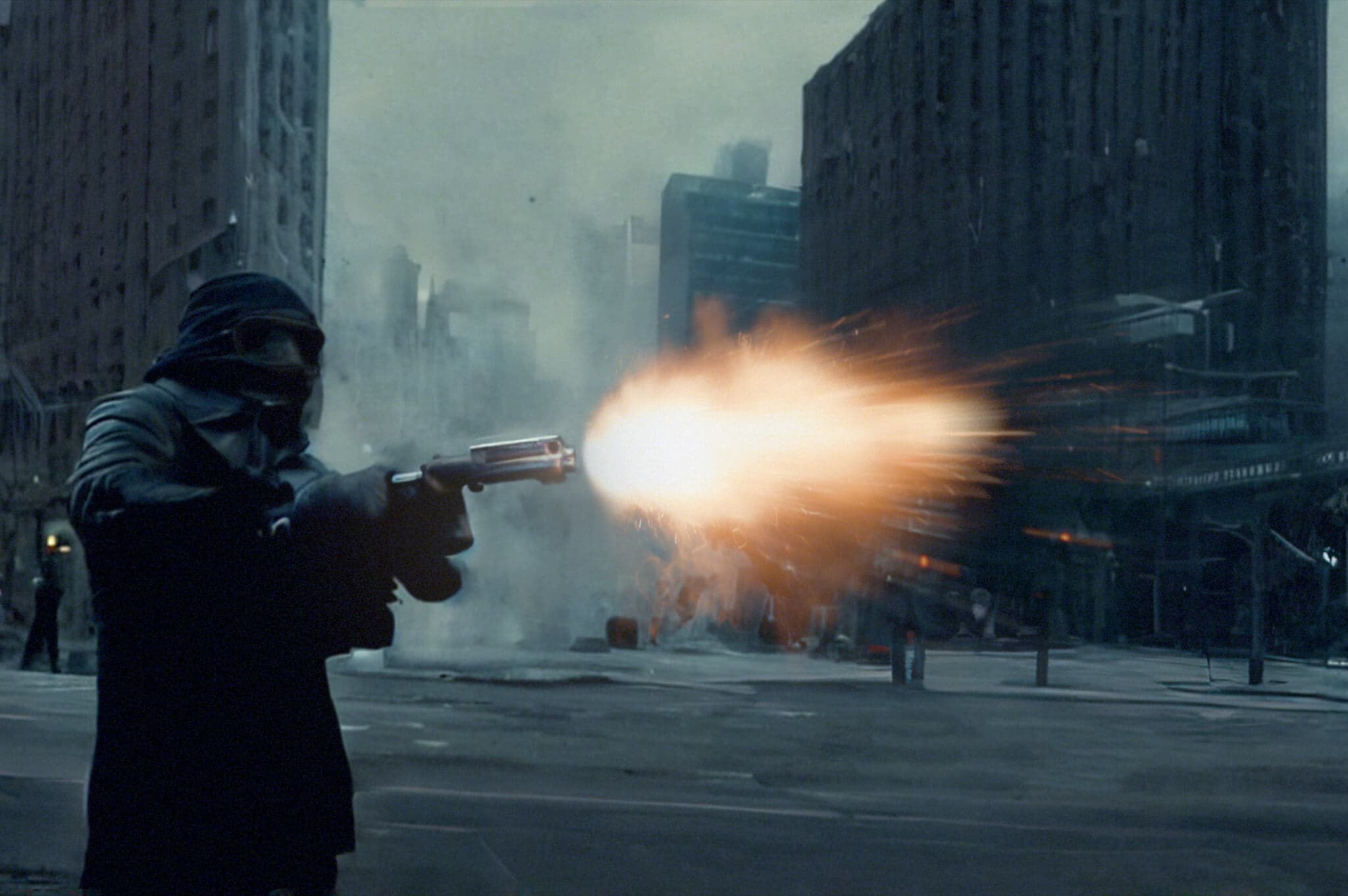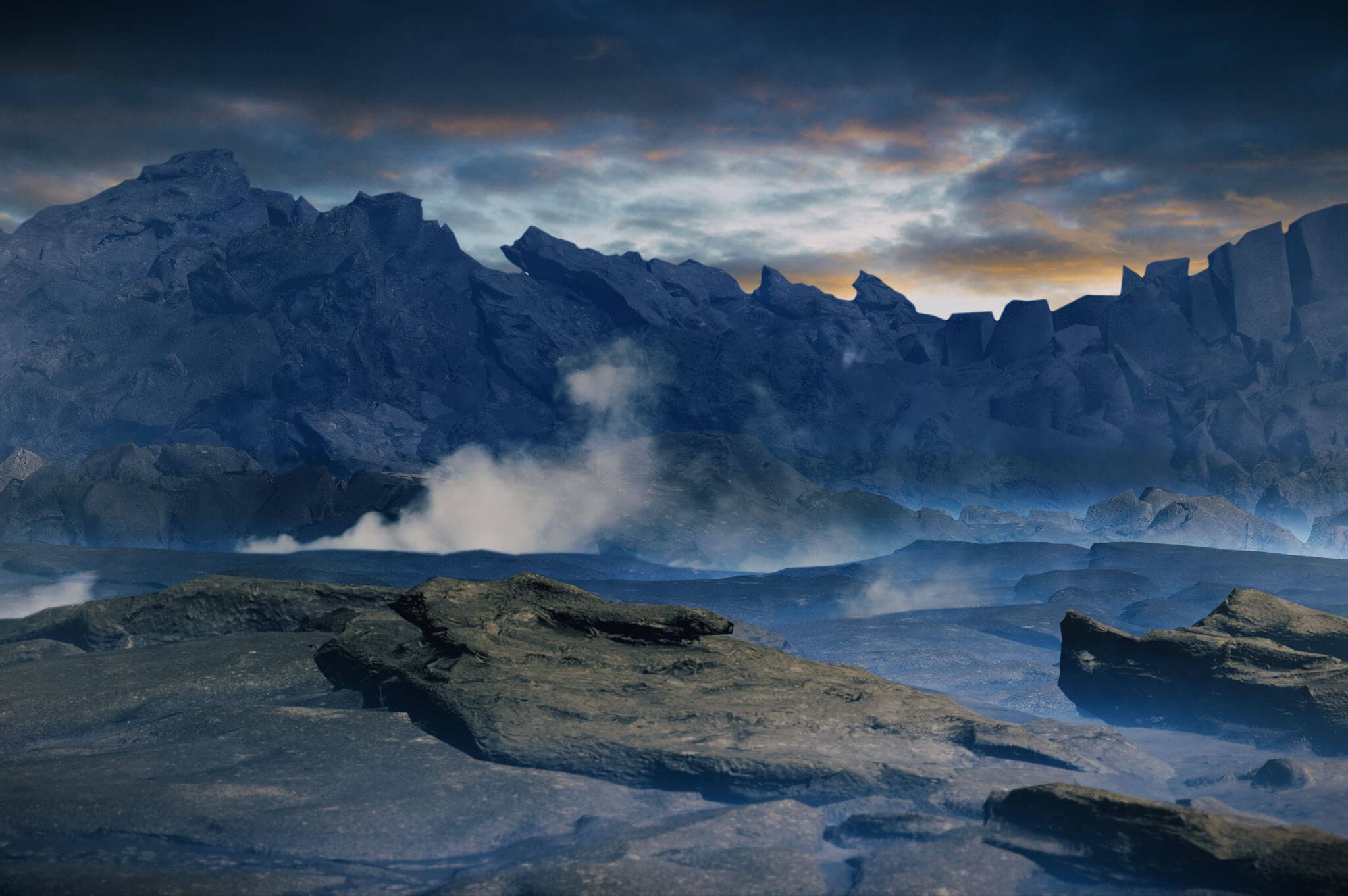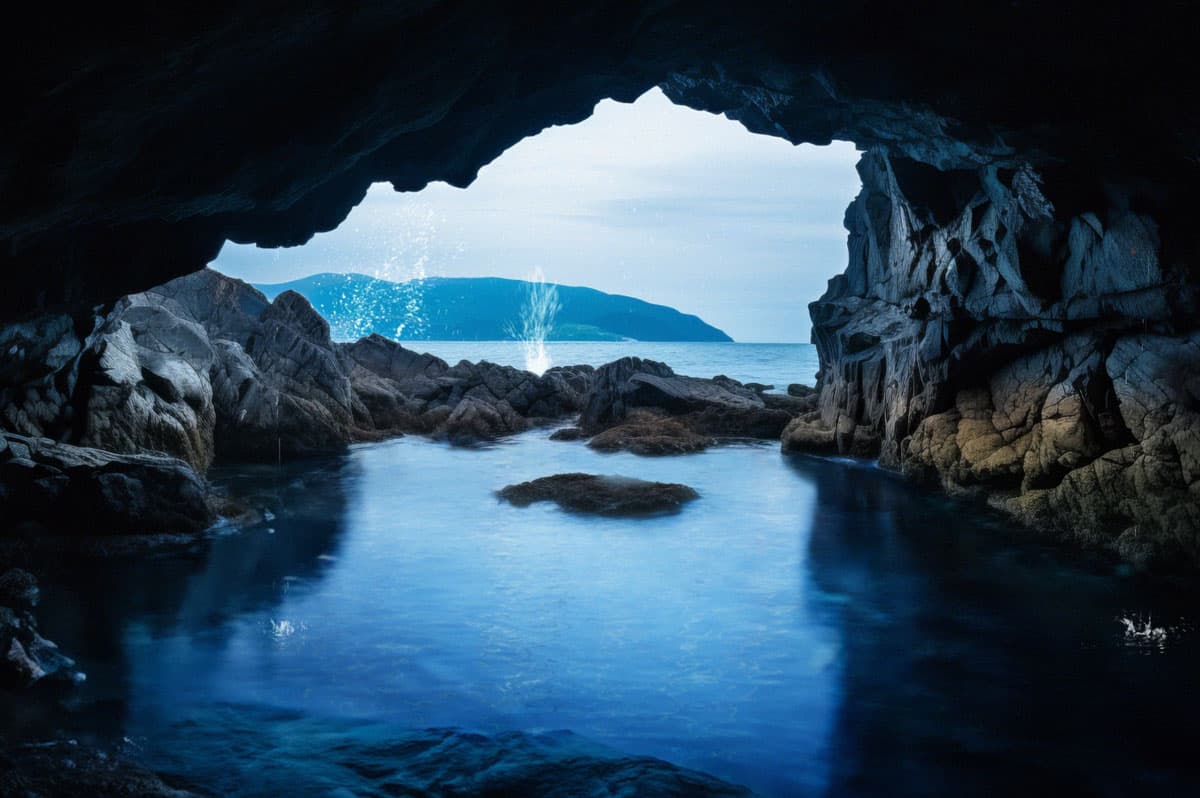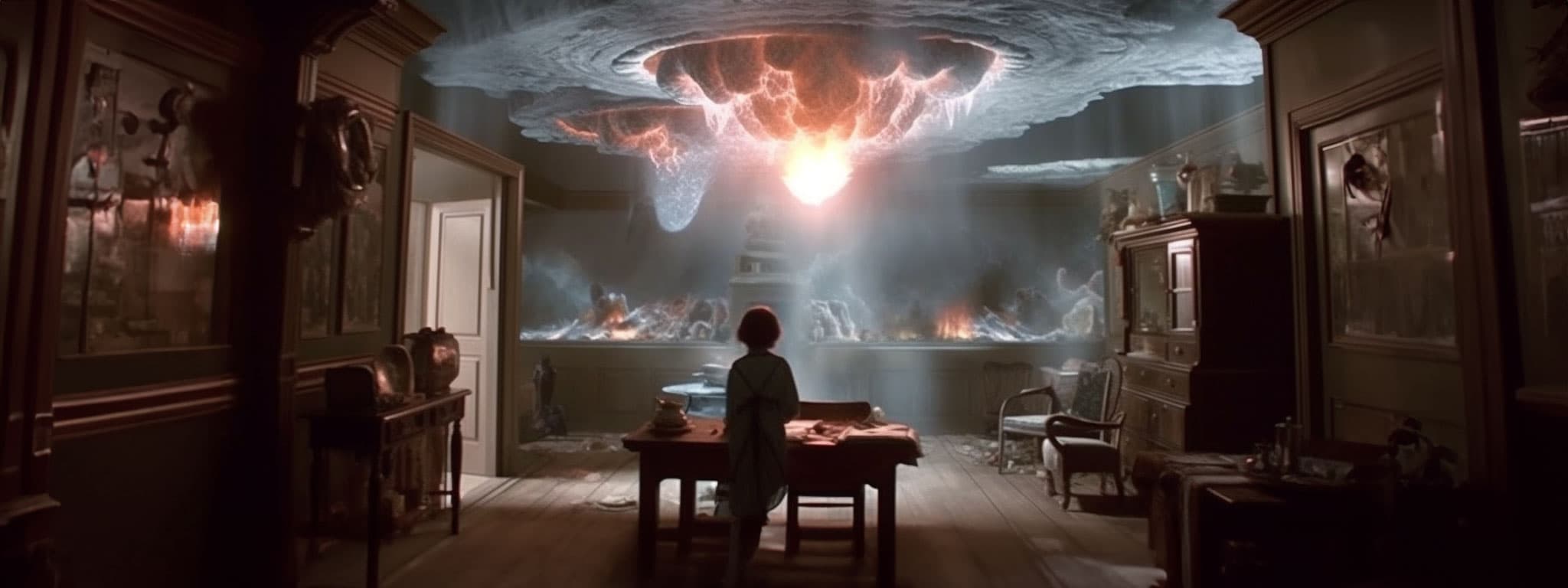
Intro to VFX
The Ultimate Guide to Understanding Visual Effects
Visual effects have become more and more common in the past decades. Visual effects have become ubiquitous in feature films, television, music videos, and even short films and social media content.
For anyone just starting out with VFX, it can be overwhelming to try and figure out where to start. The good news is that anyone can create VFX for their videos, regardless of budget or experience level. All you need is some basic VFX knowledge and the right tools.
So if you’re ready to get started with visual effects, let’s dive right in!
What is VFX?
VFX, or Visual Effects, are digital effects that are added to video footage to enhance or alter the image. VFX can range from enhancing a scene with spectacular effects like explosions, smoke, or fire to adding 3D elements like robots and monsters.
But VFX can also be extremely subtle, like removing a boom mic from the frame or an unwanted logo on a storefront.
Why VFX is Important
VFX are increasingly important because they help artists to create unique worlds and situations, and generally speaking, they allow artists to tell their stories better.
Visual effects have become increasingly popular in recent years due to its increasingly powerful software tools.
VFX vs. Special Effects
VFX and special effects (SFX) are often used interchangeably, but there is a difference between the two. VFX are digital effects applied in post-production, while special effects are physical or mechanical effects utilized on set and captured in camera during production.
In many cases, visual effects and special effects can complement one another. For example, VFX can be used to expand and accentuate an effect performed on set, such as an explosion.
Likewise, VFX stock footage can be created by filming special effects in front of a solid background, such as a black or chroma key backdrop. These isolated visual effects elements can then be used in post-production by the VFX team to create new effects.
Types of VFX
Visual effects can be broken down into several categories such as:
- Compositing
- CGI
- Digital effects
- Chroma key (green screen & blue screen)
- Matte painting or set extensions
- Motion graphics
In fact, it’s not uncommon to utilize elements from several of these categories for a single VFX shot. All visual effects involve some level of compositing, which is the process of combining and merging various elements into a final image.
VFX Basics
Getting started with the basics of VFX is as easy as downloading visual effects stock footage or overlays and incorporating them into your footage with simple compositing tools that can be found directly in most non-linear editing software.
Finding VFX Stock Footage
In order to use VFX in your videos, you will need to source stock footage of VFX elements. Stock footage can be found online from sites such as this one which offers a wide range of VFX elements for purchase.
We also have a free VFX library with a wide variety of effects available to download and use for free.
How to Add VFX to Your Videos
Once you have found the VFX elements you want to include in your video, you can start adding them to your project with the use of specialized compositing software.
For simple effects such as adding snow or rain to a static shot, you can do this directly in your editing software of choice, such as Adobe Premiere Pro or Final Cut Pro.
However, to achieve the best results possible, using specialized compositing software such as the options listed below will offer the best outcome.
Visual Effects Software
VFX artists have a wide variety of VFX software options to choose from, depending on your budget and skill level.
The best VFX software is a hard thing to define, but rather, each piece of software has its strengths and limitations. Free VFX software options are available as well, so anyone can get started in visual effects right away.
The best option is the software that fits your workflow, has the features you need for your work, and provides an interface that you find intuitive.
Compositing Software
Nuke
The Foundry's Nuke is the industry standard for digital compositing. It has been used in virtually every VFX academy award nominee and winner since its inception at Digital Domain in the early 2000s.
It features a node-based compositing system that allows you to build complicated VFX shots. For pure compositing, its power and flexibility are unmatched. However, there are two downsides to Nuke; first, it is not cheap, and so it can be difficult for a new artist to afford, and second, the node-based workflow can be unintuitive for some.
After Effects
Adobe After Effects is another popular VFX software and is equally (if not more) popular in motion graphics and animation. It offers a wide range of tools for VFX, such as motion tracking, masking, and keying.
It is a great VFX tool for beginners due to its affordability and ease of use. The downside is that it does have some limitations in terms of compositing power, and you'll likely need to purchase some plugins to fill in the gaps and get more control over your compositions.
Davinci Resolve Fusion
Fusion was originally developed as a stand-alone product from Eyeon, but it has since been acquired by Black Magic Design and integrated as part of the Davinci Resolve suite.
Fusion is a powerful free VFX software that utilizes node-based compositing similar to Nuke. Fusion has a reputation for being one of the most difficult VFX one of the most difficult VFX software to learn, but once you get the hang of it, it can be incredibly powerful.
Autodesk Flame
Flame has been around since the early 90s and is now owned by Autodesk. It offers powerful VFX tools, such as compositing, 3D tracking, paint & roto, and color correction, as well as an NLE timeline which allows it to serve as a complete finishing option.
Flame was once seen as the "gold standard" for VFX, as it has been used in some of the most iconic VFX shots ever created. One of the primary advantages of Flame historically was that it required insanely expensive hardware to run, which meant that, in return, it offered insane performance. Flame was often used in sessions with a client sitting behind the VFX artist, watching them work in real-time, offering critiques, and allowing shots and entire sequences to be finalized in an afternoon of work.
Nowadays, Flame is available as a software package which means that the performance isn't always real-time. It is still an extremely powerful software package but isn't nearly as ubiquitous as Nuke or After Effects.
HitFilm Pro
This basic VFX software is a great way to get started. HitFilm is a free software option that features a timeline-based workflow with compositing tools built in.
Paid versions offer expanded features, and the interface can take some getting used to, but it is a great VFX tool for the price point, and since it's free, it is a great VFX tool for beginners.
3D Software
When creating 3D animation and CGI (computer-generated imagery), visual effects artists have a variety of software options to choose from.
Maya
Originally developed by Alias and now owned by Autodesk, Maya has been the VFX industry standard for 3D animation since 1998.
It offers a wide range of features, such as modeling, texturing, rigging, animation, and character animation tools. Additionally, it has excellent integration with VFX software like Nuke and Flame.
Houdini
Unlike Maya, Houdini was developed solely for VFX. Originally a small VFX software used by smaller VFX houses, Houdini is now an industry standard thanks to its powerful procedural capabilities.
It has become increasingly popular recently due to its ability to create complex VFX shots quickly and with less effort.
Blender
Blender is a popular open-source 3D software that offers a wide range of VFX tools and features, such as modeling, texturing, rigging, animation, and even motion tracking and match moving.
Blender has become increasingly popular in VFX due to its low cost (it’s completely free), ease of use, and powerful rendering capabilities.
Cinema 4D
Cinema 4D is a VFX software originally developed by Maxon in the early 90s and has since become an industry standard. It offers a wide range of tools that are useful for VFX, such as modeling, texturing, rigging, and animation. However, where Cinema 4D really shines is its motion graphics toolset MoGraph which makes logos and all kinds of motion graphics easier to create.
Unreal Engine
Unreal Engine is a game development software created by Epic Games. However, because of its increasingly powerful toolset and photo-real render capabilities, it has been gaining traction in the VFX industry.
With its robust real-time rendering capabilities, which allow VFX artists to see their work in real-time while they make adjustments, it can produce amazing results in a fraction of the time of other systems. And we almost forgot to mention that this is yet another free VFX software option!
Clarisse
Clarisse was a VFX software developed by Isotropix. Like Unreal Engine, it was used for VFX primarily as a layout and rendering tool. Unfortunately, the software as discontinued in early 2023.
It does not contain modeling tools; that part of the process would need to be done in other software, such as Blender. However, what it does offer is a powerful and photo-real render engine that can handle VFX shots with massive complexity and millions of polygons of geometry, and it can do it in a fraction of the time of other 3D applications.
ZBrush
ZBrush is a VFX software created by Pixologic. It is primarily used for digital sculpting and texturing 3D assets through its dynamic brush system that enables visual effects artists to quickly generate detailed geometry.
Other VFX Software
Mocha
Mocha is VFX software designed specifically for tracking and match moving. 3D tracking and match moving is the process of taking a background plate shot and then transferring that data into compositing or 3D software so that new elements can be “placed” into the background and will follow the camera movement seamlessly.
Mocha has become an industry-standard tool for VFX thanks to its powerful tracking capabilities and user-friendly interface.
Silhouette
Silhouette is VFX software designed specifically for rotoscoping. Rotoscoping is the process of manually tracing an object within a frame, such as a character or a vehicle so that it can be separated from the background plate and then composited into a new shot.
Like Mocha, Silhouette has become an industry-standard VFX tool thanks to its advanced features and ease of use.
Tips for creating great VFX effects
When working with visual effects, it is important to think about the overall look and feel of your video. VFX can be used to add atmosphere or add a sense of drama to your visual storytelling, so consider how VFX will add to the mood of your project.
Make sure that VFX elements are realistically integrated into the footage, either by adding them as overlays in an NLE or by compositing them with specialized software such as Nuke. VFX should also be used sparingly; too much can quickly make a shot look cluttered and overwhelming.
Best practices for using VFX in video editing projects
In order to get the most out of the visual effects in your videos, here are some of the best practices that you should follow:
- Use VFX sparingly, focusing on quality rather than quantity of VFX elements.
- Make sure all visual effects are realistically integrated into the footage.
- Whenever possible, plan out VFX scenes in advance. Knowing that elements will be added in post-production can affect how a scene in filmed on set.
- Make sure all visual effects have a purpose and add to the purpose of the shot.
With these VFX tips, you should be ready to get started with adding visual effects to your videos! VFX can help bring life and excitement to any project, so don’t be afraid to experiment and have fun with VFX. Good luck!
Learning More About Visual Effects
If you're interested in learning more about visual effects, there are plenty of great tutorials and free training resources available. The learning process can be long, but if you have the desire to work in the visual effects industry, it can be worth it.
Paid VFX Training
FxPHD
FxPHD offers VFX training courses taught by industry professionals, including VFX supervisors and lead artists who have worked on blockbuster films.
They have courses that cover everything from VFX for beginners to advanced techniques. This is hand down the best place to learn visual effects in the world.
The Gnomon Workshop
Gnomon is a VFX school that offers both online and in-person VFX courses. They have an extensive online library of VFX tutorials covering topics from the basics of VFX to advanced VFX techniques.
CGMA (Computer Graphics Master Academy)
CGMA is an online VFX school that offers structured courses and tracks taught on a multi-week schedule. Unlike other options where you learn at your own pace, CGMA is structured much more like a traditional school.
Rebelway
Rebelway offers VFX courses taught by professionals who have worked on major blockbuster films. Similar to CGMA their courses start on specific dates and follow a stricter schedule.
They offer VFX courses on all the standard topics but also go a little deeper into the weeds than most, such as with VFX pipeline course, VFX workflow, and Python for VFX artists.
Udemy
Udemy is another great e-learning platform with a significant amount of VFX courses. You can find VFX courses on a variety of topics and software options.
Skillshare
Like Udemy, Skillshare is a general e-learning platform with a number of VFX courses covering topics from VFX basics to advanced VFX techniques. The great thing about Skillshare is its affordability at about $30 a month.
TutsPlus
TutsPlus offers training on a wide variety of topics. For VFX they have many beginner-level courses on Adobe products as well as other categories like 3D rendering, compositing, and motion graphics.
Free VFX Training
YouTube
YouTube has a vast amount of VFX tutorials from VFX professionals and enthusiasts. The hardest part with YouTube is sifting through the cruft and finding high-quality training.
Many VFX professionals have their own YouTube channels, which they use to share VFX tips and tricks.
Video Copilot
Video Copilot is a VFX site created by Andrew Kramer. Over the years, Andrew has created some of the best visual effects tutorials ever. He mostly focuses on After Effects, but the techniques he uses generally could translate to any compositing software.
Have fun!
With visual effects, the possibilities are endless. From photo-real render capabilities to advanced tracking and match moving, modern visual effects software provides visual effects artists with the tools they need to create stunning effects for their projects.
Visual effects are a great way to add excitement and drama to any video project. If you want to create visual effects for your videos, consider starting with VFX stock footage library. Visual effects should be used sparingly and with a purpose in mind to create the desired effect. With these tips in mind, you should be able to add VFX to your videos like a pro!
Good luck and happy VFX-ing!

